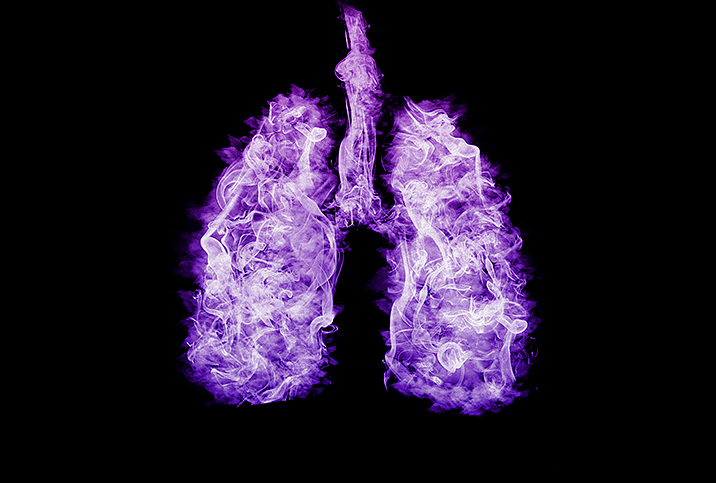How to Use Nicotine Replacement Therapy the Right Way

Nicotine replacement therapies, such as the patch or gum, can serve as valuable tools on your path to becoming smoke-free. Here's how these products work and the details you should consider as you plan to quit.
What is nicotine replacement therapy?
Nicotine replacement therapy (NRT) provides measured doses of nicotine to minimize withdrawal symptoms while a person quits smoking. Nicotine may be administered through a patch, inhaler, gum, nasal spray or lozenge. You can access NRT through your healthcare provider, and some products are available for purchase over the counter at a pharmacy. Many health insurance carriers offer incentives to quit smoking, including free or reduced-cost NRT.
NRT doesn't have the chemicals and toxins found in cigarettes and tobacco products. Choosing the right nicotine dosage based on your previous or current smoking levels lets you systematically cut down until your cravings are easier to manage. Although NRT can reduce the physical addiction to nicotine, quitting smoking requires a comprehensive look at your triggers, behavior patterns and coping skills.
Who should use NRT?
NRT is intended for people with a high level of nicotine dependence. If you're an occasional smoker or able to cut down to smoking fewer than five cigarettes a day, you won't benefit from NRT. Even the lowest dosage NRT products could increase your nicotine dependence rather than reduce it. Taking in more nicotine than you're used to can come with unpleasant side effects, including nausea and jitteriness.
The ideal candidate for NRT is someone who struggles with a high level of nicotine dependence. If you regularly smoke more than a pack a day, smoke while you're sick, wake up at night to smoke or smoke within the first five minutes of getting up in the morning, you're likely addicted to the physical effects of nicotine. NRT can alleviate withdrawal symptoms, so you can put your energy toward changing the other aspects of addiction, such as social triggers or using smoking as a stress-reliever.
Setting up your quit plan
Quitting tobacco is tough, so you'll want to plan for this significant life change. Taking some time to put together a quit plan will help you anticipate solutions to the everyday challenges you'll face. A quit plan should include essential components, such as why, when and how you're going to quit.
Understanding your reasons for quitting and reminding yourself of them regularly will reinforce your commitment to change. Reasons may include:
- Being able to breathe better and exercise more vigorously
- Feeling and looking healthier for future events and milestones
- Getting away from the stigma associated with tobacco use
- No longer smelling like smoke
- Preventing serious disease
- Reducing your insurance premiums
- Saving money by not buying tobacco
- Setting a good example for your kids and loved ones
Mark your quit date on the calendar, and let friends, family and coworkers know about it to help you stay accountable. Choosing a day that's busy but not stressful could help you be more successful. In addition to getting NRT, keep sugarless gum, hard candies and other oral substitutes available for when cravings hit.
Considering your NRT options
Now that you know your "why" and "when" for quitting, it's time to figure out the "how." When used correctly, NRT has been shown to double the likelihood of your quitting for good. Since quitting smoking is the number-one thing you can do for your health, you might as well give yourself every advantage to make it work.
Nicotine patches, gum and lozenges are available over the counter, while inhalers and nasal sprays require a prescription. It's never a bad idea to let your healthcare provider know about your plan to quit to see if they have any suggestions about the best NRT options based on your medical history.
Take some time to think about which product would help you the most. If smoking is attached to certain routines in your day (like your morning coffee or your lunch break), the gum or lozenge can serve as a nicotine substitute during those trigger moments. However, if you'd prefer to get a consistent dose of nicotine throughout the day, the patch is applied once a day and supplies a small, steady amount of nicotine.
Be sure to read through all of the information provided in your NRT packet to familiarize yourself with using the product effectively. While NRT is generally safer than smoking, the ultimate goal is to continue reducing your dosage until you're completely free of nicotine.


















